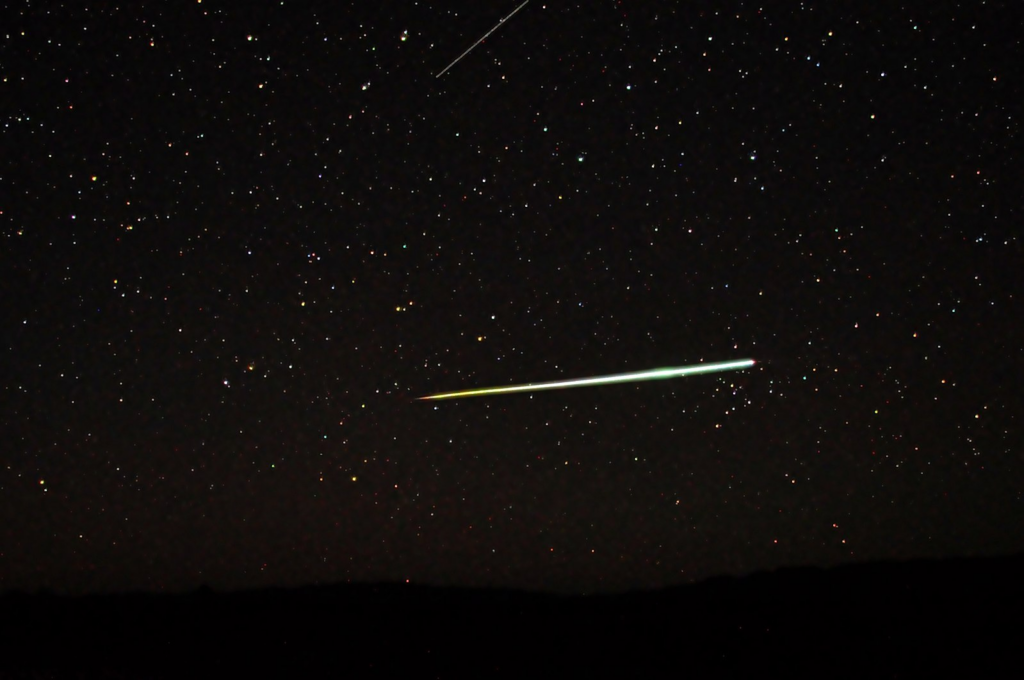Sky Report: June 5 – 11

A bright meteor can fall at any time. Source: Wikimedia Commons.
The closest and brightest supernova – exploding star — in years burst forth in a nearby galaxy on May 19. Although close and bright you’ll need a telescope at least 6-inches in diameter to see it. It’s wonderfully placed nearly overhead in the early evening near the end star in the handle of the Big Dipper, in the bright galaxy M101. Google “supernova m101” for all the information you could want.
You don’t need a telescope to see the moon and planets. Mars and Venus form a pretty pair in the evening sky. You’ll see Venus 1/4 of the way up the western sky as darkness falls, and Mars is to the upper left of Venus. On the 5th they’re 9° apart and on the 11th they’re 7° apart (the width of your fist held at arm’s length is 10°). Mars is only 1/150th as bright as Venus. Note the color contrast; Venus is the same color as the sun while Mars is slightly orange.
Venus has been moving eastward against the background of stars for months, approaching Mars, which has been moving eastward too but much slower. Watch Venus continue to close the gap – for a few more weeks only.
Both planets are in Cancer, a constellation with no bright stars. The only reason you’ve heard of Cancer is because the ecliptic – the path of the sun, moon, and planets – passes through it, and so do they. One noteworthy object in Cancer is the Beehive Star Cluster; Mars passed in front of it on the 1st and 2nd and Venus will pass close to it next week. The Beehive is best seen with binoculars or a wide-angle spotting telescope.
Saturn and Jupiter are in the morning sky. An hour before sunrise Jupiter is due east but only about 15° high. Its great brightness let you see it in morning twilight.
Saturn is fainter but higher so may be easier to see. At the same time it’s 1/3 of the way up the southeast sky. The moon is right of Saturn on the 9th and left of Saturn on the 10th.
Summer is the best time to see meteors since two major meteor showers are active (the Delta Aquariids in late July and the Perseids in August) but you can see meteors any night of the year. On a typical night you’ll see roughly six meteors per hour. Some are dust shed by comets and thus are the same particles that fall in a meteor shower, but others have a quite different origin – they are particles knocked off asteroids, and these come from random directions at random speeds. Some that are large enough survive their fall to land as meteorites.
The Grand Canyon Star Party is held on both rims from June 10-17, when visitors can look through a slew of telescopes, some amazingly large, at a variety of objects under a very dark sky – for free. I participated one year and it was fun. Learn more with Google.
Stellar Vista Observatory provides portable telescopes and tripod mounted binocular kits on loan for free to residents and visitors in Kane County. Enhance your enjoyment of the night sky! To learn more, request a loan, or attend one of SVO’s free public star parties for 2023, visit https://stellarvistaobservatory.org/ or drop in to the Kane County Office of Tourism.






Comments are closed.